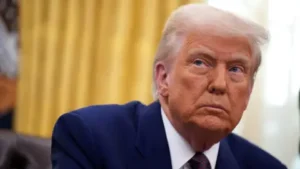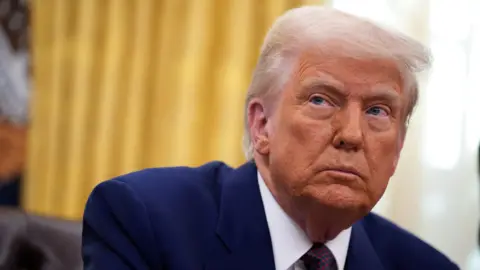The impact of tariffs on the U.S. economy has been a subject of intense debate, especially since former President Donald Trump implemented significant tariff measures after resuming his presidency in January 2025. His administration initiated a series of tariffs targeting Mexico, Canada, and China, further extending this to sectors such as steel, aluminum, and the automotive industry. The culmination of these efforts came in April during an event branded as “Liberation Day,” where Trump announced an extensive array of new tariffs across multiple countries, igniting immediate concerns in both trade and financial markets.
As concerns surrounding these tariff introductions grew, Trump made a tactical suspension of his most severe proposals to allow for a 90-day negotiation period with various trading partners. However, the looming deadline of July 9 placed immense pressure on the economy and the financial markets, prompting a thorough examination of the tariffs’ actual effects on the U.S. economic landscape.
One noteworthy component of this tariff strategy was the immediate reaction from the stock market. Trump’s announced tariffs included drastic increases—up to 20% on goods from the European Union, 145% on various imports from China, and 46% on Vietnamese products. The U.S. stock market responded negatively to these announcements, with the S&P 500 suffering a significant drop of approximately 12% over a week. This downward trend culminated in April when the stock index plummeted following the unveiling of Trump’s comprehensive tariff strategy on Liberation Day. Yet, following a later moderation in tariff rates, the market rebounded, showing resilience with the S&P 500 rising roughly 6% for the year.
Despite the overall recovery in broader stock indices, the tariffs have had an ongoing detrimental effect on specific sectors, particularly those closely tied to international trade, such as the retail and automotive industries. Concerns amplified as the July negotiation deadline drew nearer, putting companies reliant on imported goods under significant pressure. Analysts like Liz Ann Sonders, chief investment strategist at Charles Schwab, expressed that the market rebound might indicate a false sense of security among investors, who could face a renewed shock if aggressive tariff implementations reemerge.
The trade landscape has also seen fluctuations attributed to Trump’s policies. Early in the year, there was a surge of imports as companies anticipated the effects of the incoming tariffs, only to witness a decline during the months of April and May. Overall, the initial five months of 2025 saw U.S. goods imports rise by 17% compared to the preceding year, showcasing a complex picture influenced by expectations and trade policy adaptations.
On one front, inflationary impacts resulting from these tariffs raised questions regarding their feasibility in maintaining consumer spending. Tariffs are believed to disproportionately affect only about 11% of consumer expenditure in the U.S., leading the Trump administration to downplay concerns over rising costs of living. However, some segments, such as toys, demonstrated significant price increases, and many goods subject to new tariffs had not yet appeared on store shelves. Businesses, shielded by corporate profitability, could implement gradual price increases to adhere to market conditions without alienating buyers.
Overall consumer spending appeared to take a downturn earlier this year, coinciding with the announcement of tariff plans. While political factors often shape the public’s perception of economic conditions, declining retail sales—0.9% from April to May—indicated potential economic contractions. Analysts observed the slowest growth rates in consumer spending since 2020, hinting at a broader economic slowdown, albeit most forecasts suggested a recession could be avoided assuming the labor market maintained its strength.
Current conditions exhibit a hesitation or “stall mode” among businesses regarding hiring and investment. Consequently, economic growth faces uncertainty, as experts warn that revitalization of growth may be unlikely with existing policies in place. The essential question remains whether the economy will undergo a soft landing or face a more drastic downturn. In summary, the repercussions of tariff implementations by Trump’s administration present a multifaceted narrative laden with challenges and potential threats to the long-term health of the U.S. economy.











